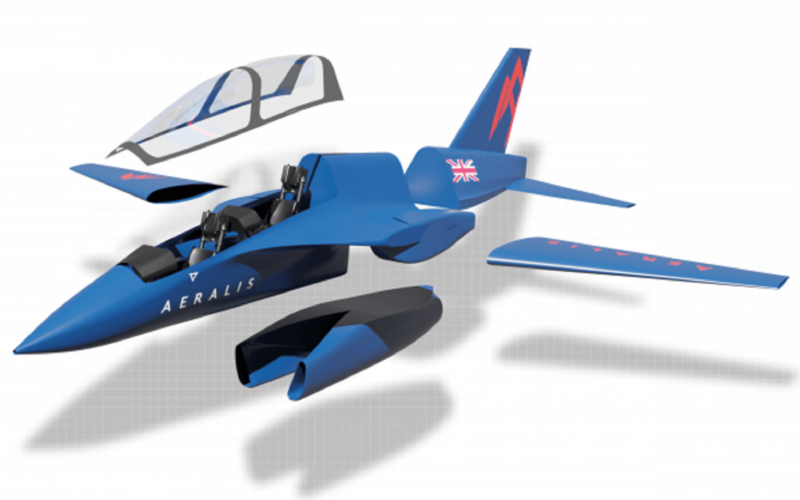Aeralis, a London-based aircraft developer, wants to produce a training aircraft that can be transformed into three different variants through a modular system. By simply replacing the wings and the engines of their jet, it could assume the role of basic and advanced trainer, as well as carry out ground attack missions. The modularity could even go as far as offering unmanned capability.
Keeping a common fuselage means that 85% of the components would be common to all versions of this aircraft, which would reduce the operational cost of the fleet by 30%, according to Aeralis. Currently, the RAF operates the Hawk T1 and T2 trainer jets.
The idea caught the eye of the Royal Air Force’s Rapid Capabilities Office (RCO), whose role is to identify potential technological systems that could benefit the force and accelerate their development. Thus, a £200,000 ($281,463) grant was awarded to the company.
With this new contract, the RCO and Aeralis will explore the application of the two-seater aircraft to the needs of the RAF. “Aeralis is focused on re-inventing how future military aircraft are developed and operated, and we’re delighted to help set the pace and vision for future RAF systems with the Rapid Capabilities Office,” Aeralis chief executive officer Tristan Crawford commented.
Aeralis hopes that their aircraft will be able to support the next generation of fighter jets. As a side note, the RCO is also funding the Tempest Future Combat Air System (FCAS) program in which BAE Systems, Rolls Royce, Leonardo, and MBDA develop a “system of systems” that include a sixth-generation fighter jet.
In October 2020, Airbus Defense & Space and Spain unveiled a new tailor-made project, the Future Jet Trainer (AFJT), which could eventually be used to train pilots for the sixth-generation fighter jets. Spain is part of the Future Combat Air System (FCAS), along with France and Germany.

